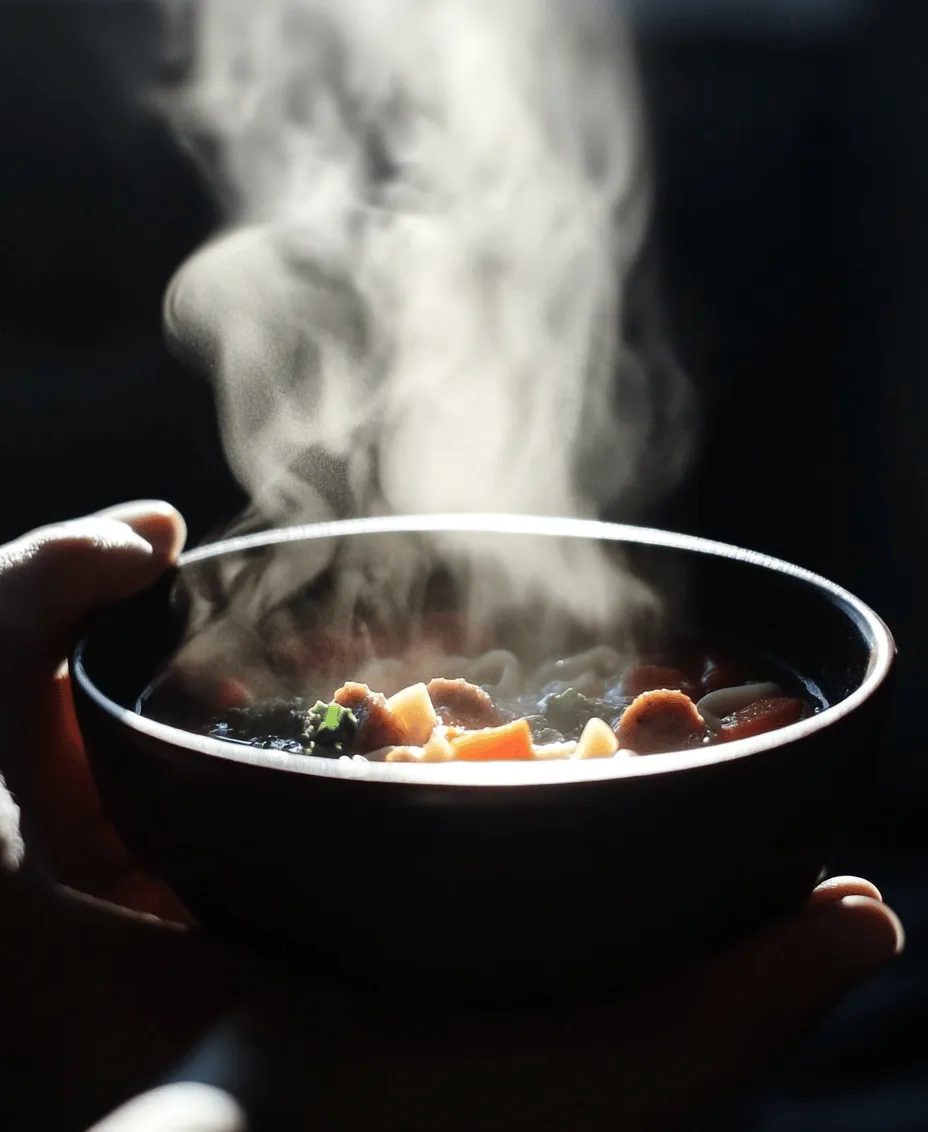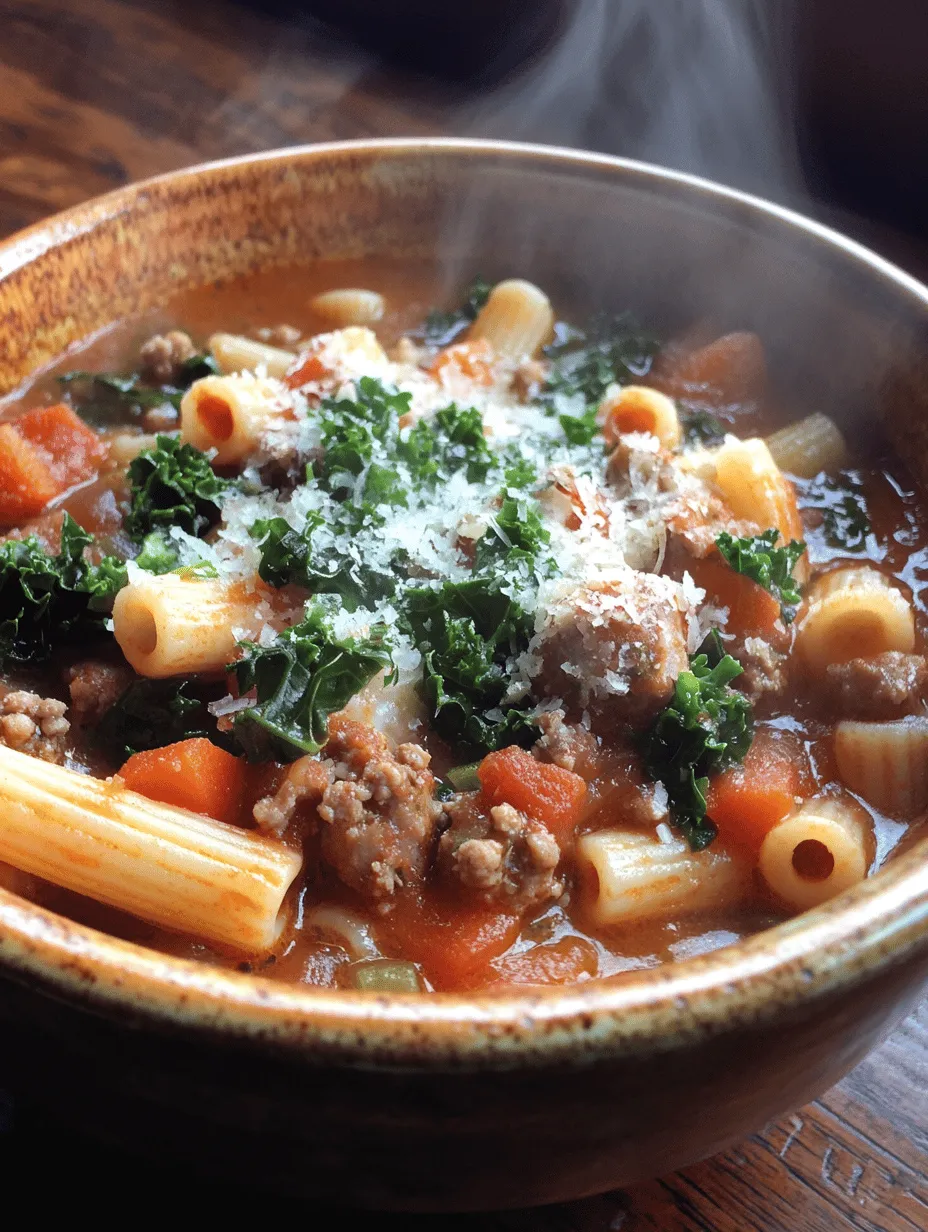Introduction
There’s something undeniably soothing about a warm bowl of soup. From chilly winter evenings to cozy family gatherings, soup has a way of wrapping you in comfort and warmth. Among the myriad of soup recipes, Italian Sausage Soup stands out as a heartwarming dish that combines robust flavors and wholesome ingredients. This soup is not only easy to prepare but also offers a delightful medley of tastes that evoke the cherished traditions of Italian cooking.
Italian Sausage Soup is a perfect reflection of the comforting nature of Italian cuisine. It marries the richness of Italian sausage with the freshness of vegetables and the heartiness of broth. The unique blend of flavors from herbs and spices, along with the umami kick from Parmesan cheese, creates a satisfying dish that warms the soul. Whether enjoyed as a family meal or served to guests, this soup is sure to become a favorite in your culinary repertoire.
In this article, we will delve deeper into the specifics of crafting this delightful Italian Sausage Soup, exploring the key ingredients that elevate its flavor and the step-by-step preparation techniques that ensure each bowl is packed with comfort.
Understanding the Ingredients
To create a truly comforting Italian Sausage Soup, it’s essential to understand the role of each ingredient. The quality and selection of ingredients can greatly influence the final outcome, transforming a simple soup into a culinary masterpiece.
Italian Sausage: Choosing Between Mild and Spicy
The star of this soup is undoubtedly the Italian sausage. When selecting your sausage, you have the option to choose between mild and spicy varieties. If you prefer a dish with a gentle warmth, opt for mild sausage. For those who enjoy a kick, the spicy version will add a delightful heat that enhances the overall flavor profile. Regardless of the choice, the sausage should be made from high-quality pork and flavored with classic Italian herbs like fennel and garlic, which infuse the soup with depth and richness.
The Role of Vegetables
No soup is complete without a hearty base of vegetables. In Italian Sausage Soup, the combination of onion, garlic, carrots, and celery forms the aromatic foundation that brings the dish to life.
– Onions and Garlic: The aromatic duo that starts most savory dishes, onions and garlic sautéed to a golden hue create a fragrant base, enhancing the overall flavor.
– Carrots: Adding a touch of sweetness and color, carrots not only provide visual appeal but also contribute beneficial nutrients like vitamin A.
– Celery: Known for its crisp texture and subtle earthiness, celery adds complexity and depth to the soup, balancing the richness of the sausage.
These vegetables are not just for flavor; they bring essential nutrients and texture, making every spoonful a balanced experience.
Importance of Canned Tomatoes for Depth of Flavor
Canned tomatoes are a cornerstone of Italian cooking, and their inclusion in this soup is crucial for adding depth and richness. They provide acidity that balances the fat from the sausage while contributing a vibrant color and natural sweetness. When selecting canned tomatoes, consider using whole peeled tomatoes or crushed tomatoes for a more pronounced tomato flavor. The choice will depend on your preference for texture—whole tomatoes for chunkiness or crushed for a smoother broth.
Broth Choices: Chicken vs. Vegetable Broth
The choice of broth can significantly influence the soup’s flavor. Chicken broth offers a savory depth that complements the sausage beautifully, while vegetable broth provides a lighter, vegetarian-friendly option. If you want to enhance the overall flavor, consider using homemade broth or a high-quality store-bought option. The broth should be low-sodium to allow for better control over the seasoning of the soup.
Nutritional Benefits of Kale or Spinach
Kale or spinach can be incorporated into the soup for added nutrition and color. Both greens are rich in vitamins A, C, and K, as well as minerals like iron and calcium. They not only contribute to the soup’s health benefits but also create a vibrant contrast against the rich, hearty broth. Adding these leafy greens towards the end of the cooking process helps maintain their bright color and nutritional integrity.
Herbs and Spices: Oregano, Basil, and Red Pepper Flakes
Herbs and spices are essential for infusing the soup with authentic Italian flavor. Oregano and basil are classic Italian herbs that bring a fragrant aroma and a hint of earthiness. If you enjoy a bit of heat, adding red pepper flakes will elevate the flavor profile, providing a subtle warmth that enhances the overall dish. Fresh herbs can also be used as a garnish, adding a burst of color and freshness just before serving.
The Significance of Parmesan Cheese in Italian Cuisine
No Italian dish is complete without the addition of Parmesan cheese. This hard cheese, with its nutty and salty flavor, adds richness and umami to the soup. Grating fresh Parmesan over the top just before serving not only enhances the flavor but also adds a beautiful finishing touch. For those watching their sodium intake, consider using a lower-sodium Parmesan or a smaller amount to still enjoy the cheese’s distinctive taste without overwhelming the dish.
Preparation Steps for Optimal Flavor
Now that we’ve explored the essential ingredients, it’s time to dive into the preparation process. Each step is designed to maximize flavor and ensure that the soup is both delicious and satisfying.
Detailed Guide on Preparing the Sausage
Start by removing the casings from the Italian sausage. This step is crucial for allowing the sausage to break apart and incorporate into the soup effectively. If you prefer a smoother texture, you can also use ground Italian sausage, which eliminates this step altogether.
Importance of Browning for Flavor
Browning the sausage is one of the most critical steps in the preparation process. Heat a large pot or Dutch oven over medium heat and add a drizzle of olive oil. Once the oil is shimmering, add the sausage, breaking it apart with a wooden spoon. Allow it to cook undisturbed for a few minutes until it develops a golden-brown crust. This browning process creates complex flavors through the Maillard reaction, which will deepen the overall taste of the soup.
Tips for Draining Excess Fat
Once the sausage is browned, it’s essential to drain excess fat to avoid a greasy soup. Carefully transfer the cooked sausage to a plate lined with paper towels to absorb the fat. If there is too much fat in the pot, you can carefully pour some out or use a spoon to remove it. However, leave a small amount of fat in the pot, as it will add flavor to the sautéed vegetables.
Sautéing the Vegetables: Techniques for Perfect Texture and Taste
With the sausage cooked and drained, it’s time to sauté the vegetables. In the same pot, add a bit more olive oil if needed, and then toss in the diced onions, carrots, and celery. Cook them over medium heat, stirring occasionally, until they soften and the onions become translucent. This process usually takes about 5-7 minutes.
Next, add minced garlic and cook for an additional minute until fragrant. Be careful not to burn the garlic, as it can become bitter. This aromatic mix of sautéed vegetables will lay the foundation for the soup, enhancing its flavor and texture.
Now that the vegetables are perfectly sautéed, you are well on your way to creating a delicious Comforting Italian Sausage Soup with Parmesan. This soup promises to deliver warmth, flavor, and satisfaction in every bowl. Stay tuned for the next steps where we will bring all these elements together for a delightful finish.
 Categories Uncategorized
Categories Uncategorized

